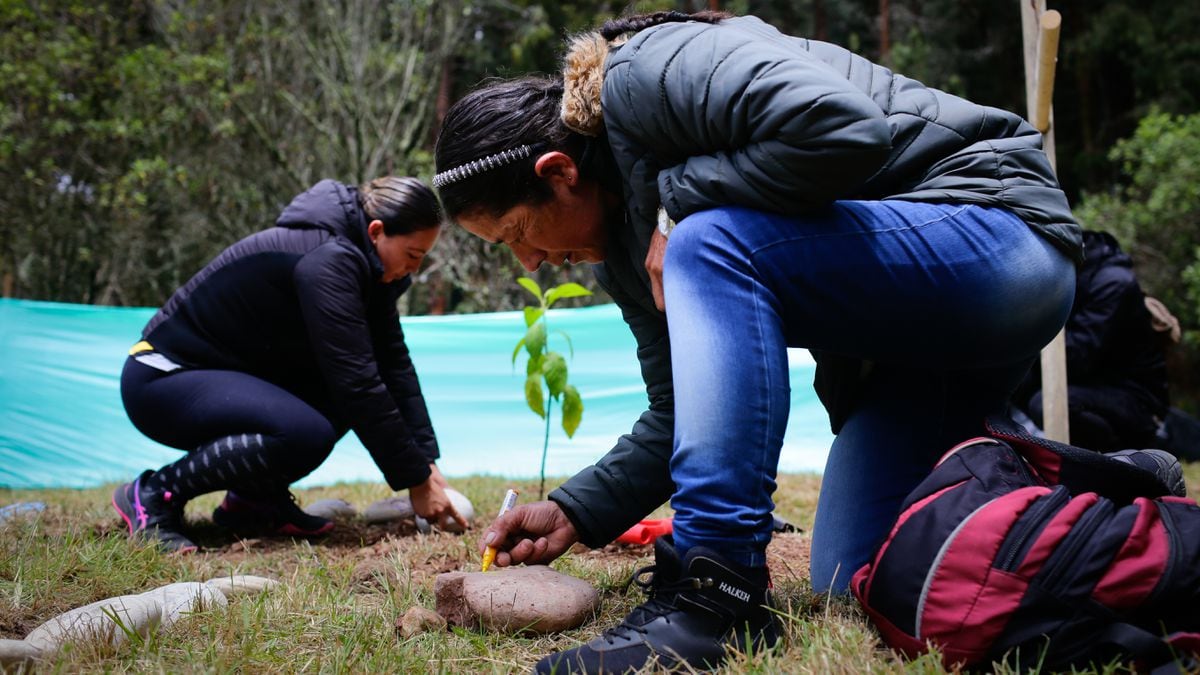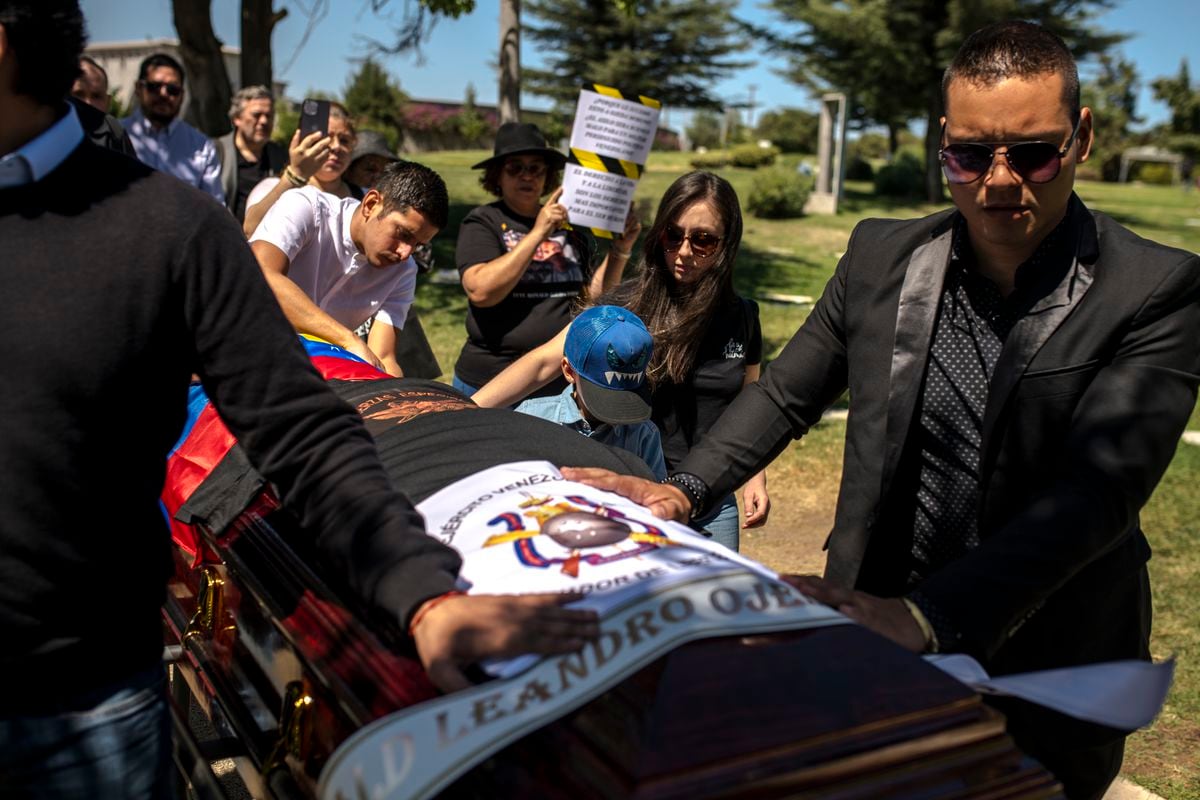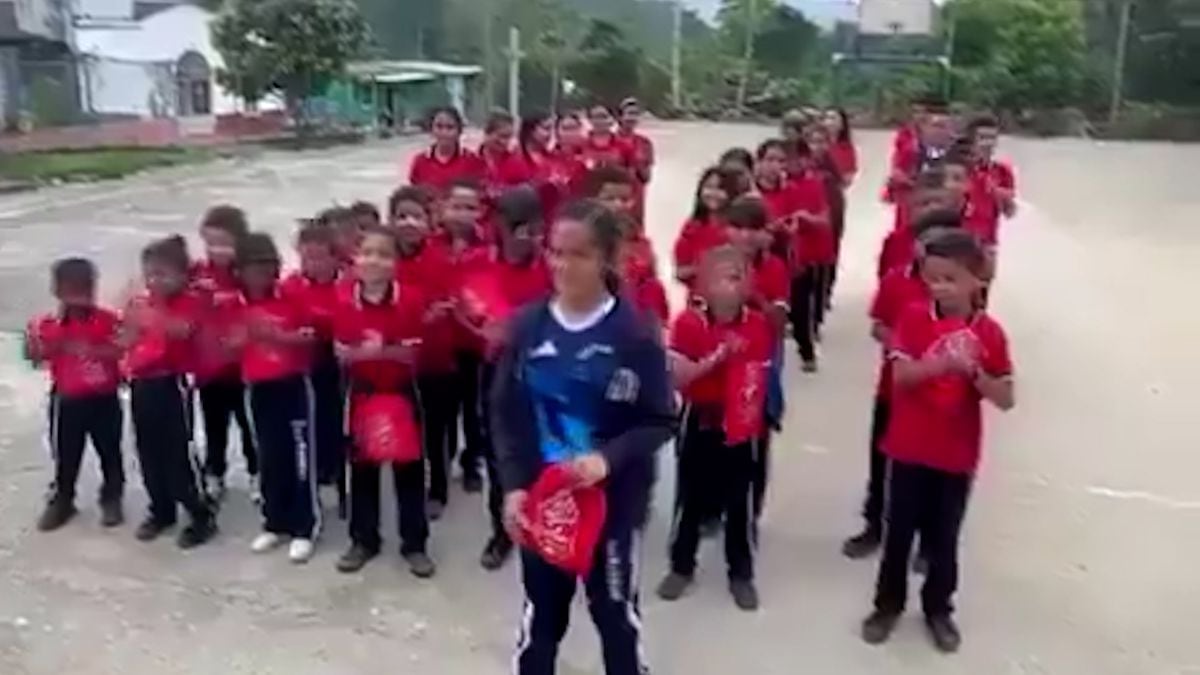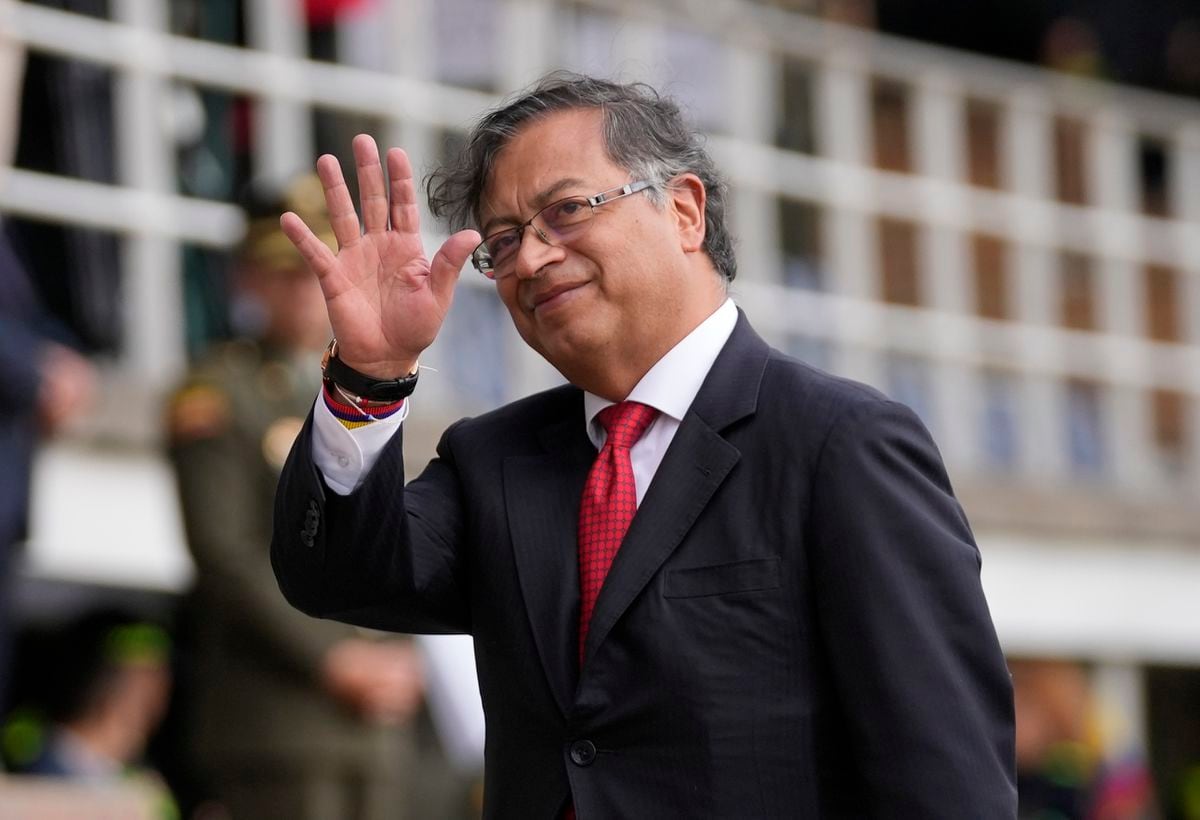Enlarge image
The biologist and ornithologist Diego Calderón (left) with an excursion participant in the Colombian jungle (2018)
Photo: Federico Ríos Escobar
Atlapetes fuscoolivaceus had finally emerged.
A little yellow ball in the middle of the green.
Noiseless cheers broke out in the group.
Nobody wanted to scare the little bird, which is called Russkopf-Buschammer in German.
Peasants hugged guerrillas who are no longer.
They spent almost half a life as neighbors and yet in other worlds.
A few weeks later, Diego Calderón describes the encounter in May 2021 at Planadas, Tolima, in Colombia on the phone.
A place very close to the area where the Farc, Colombia's historically largest guerrilla group, was founded 57 years ago.
"This is what reconciliation looks like," says Calderón.
Diego Calderón is a biologist and ornithologist.
And he believes that bird watching can heal some of the wounds that the armed conflict between the government and guerrillas has left on the Colombian people for decades.
Calderón is someone who knows how to forgive: In 2004, the 41-year-old was kidnapped by the guerrillas when he was looking for birds in the mountains.
Today, 17 years later, he campaigns for the reintegration of ex-Farc fighters.
When the Colombian government and the FARC signed a peace treaty in 2016 after more than 50 years, Calderón was determined to help because, he says, peace is more important than anything else. "My kidnapping gives me the opportunity to be a role model: if I help the group that kidnapped me, it may be easier for others to see ex-guerrillas as people."
He also takes them all with him into his bird world: guerrillas, farmers, indigenous peoples.
To do this, he drives to one of the 24 reintegration centers, called ETCR, that were set up in Colombia as part of the peace process.
There he talks about the distinguishing features of birds, their habitat and teaches how to use binoculars and cameras.
The most important part, however, are the discovery tours: residents and ex-guerrillas go looking for birds in the area together.
"No matter whether it's an eagle or a sparrow - a bird adapts, reinvents itself, persists," says Calderón.
“He's a descendant of the dinosaur.
The dinosaur who survived. ”Actually, Calderón thinks, a nice metaphor for the guerrilla who laid down his arms.
More than 250 ex-combatants have been killed since the peace accord five years ago, and it is estimated that around 3,000 ex-guerrillas have joined dissident organizations and re-armed themselves.
At the same time, many people in Colombia did not forgive the ex-fighters.
The peace process in Colombia is on shaky legs.
"There is still mistrust between the farmers and the ex-combatants," says Mayra Ruiz Medina.
She is the reintegration officer in Planadas.
“The peasants and indigenous people who live here have difficulty trusting the people who have marched through here with weapons for so long.
At the same time, many ex-fighters are afraid of being prejudiced. "
Aceneth Bedoya grows coffee plants, bananas and beans in Planadas.
Just like her parents before her.
In 2007, when her daughter was three years old, she says, a guerrilla group told her not to worry: the Farc would recruit the girl in a few years.
Then the little one could fight for a good cause.
"I was terrified of them," says Bedoya.
But this feeling has decreased, says the 45-year-old farmer.
Especially since she ran through the forest with the former Farc fighters in May and discovered the yellow soot-head bushhammer after hours of searching.
“At that moment we were all happy.
It was as if we were suddenly no longer strangers. "
Aracelly Guevara also experienced this moment in May. Aracelly, that's her old battle name that the Farc gave her in the jungle. She no longer knows her real name, she says. Maybe she doesn't want to remember him. She spent more than 20 years with the guerrilla, which she only calls the "organization". She gave birth to her daughter in time and left her with relatives in town. She tells all of this with no visible emotions.
But when Aracelly talks about birds, she gets tangled up in between, she is so excited: “I've known them all for so long from my time in the forest.
But now I know what their name is, which one sings how and how best to photograph them. ”And she knows that not a few of them are threatened.
Including some species of hummingbirds - their favorite birds.
It's a subject she'd rather talk about than her time in the guerrilla.
"We have to do everything we can to keep these beautiful animals alive."
Diego Calderón is convinced that ex-FARC members can help: "They know the forests of Colombia like hardly anyone else - after all, they occupied them for a long time." With more than 1900 species, Colombia is the country in the world with the most bird species.
Calderón hopes that in the future, ex-guerrillas will show tourists some of these species and pass on the importance of protecting them.
“Most of the former fighters I know have developed a love for our nature through their years in the forest.
It was her home after all. "
And there Farc fighters kidnapped Calderón 17 years ago: He was traveling with colleagues on a research trip to the north-west of the country, to the Sierra de Perijá, a mountain range near the Venezuelan border.
Calderón tells how he, another colleague and a guide on a pre-excursion
came across two supposed farmers who looked suspiciously at their binoculars.
When they wanted to leave the mountain, the Farc guerrillas disguised as farmers stopped them.
"They told us that the commander was very upset that we had been there and that we should wait," says Calderón.
“Two and a half days later, at least a hundred FARC fighters showed up in full gear and took us to the main camp nearby.
That started three months of kidnapping. "
The three were held together, sometimes with other abductees.
During this time the birds would have saved him - from the fear, from the boredom.
During the day, he says, he tried to remember every detail of every bird he saw.
At night he scribbled his memories on the paper of the packets of cigarettes the guerrillas gave him.
He stuffed the plastic-wrapped scraps of paper into the hollow metal frame of his backpack so that no one could see his notes.
“The commandant took my field diary directly from me.
He thought the Latin bird names in it were codes.
He was probably afraid that I was a government spy and was secretly making notes about the guerrillas. "
After a few weeks, says Calderón, the commandant apparently understood that he was not an informant.
The Farc then demanded a ransom from his family, which they were unable to pay.
Finally the commandant went down with his demand.
Calderón doesn't want to talk about the exact amount, just says: "My parents had to borrow money from the whole family."
When he was released shortly after the others three months later, he managed to take his notes with him from detention.
Including a drawing of a shining redtail, a species that only occurs in this area - and which Calderón saw there for the first time.
Since then he has tried to remember this beautiful experience when he thinks about the kidnapping.
"Maybe not everything has to be forgiven," says Calderón today.
"We should rather try to live together and perceive the other for what he is: a person with faults."
This contribution is part of the Global Society project
Expand areaWhat is the Global Society project?
Reporters from
Asia, Africa, Latin America and Europe
report under the title “Global Society”
- on injustices in a globalized world, socio-political challenges and sustainable development.
The reports, analyzes, photo series, videos and podcasts appear in the international section of SPIEGEL.
The project is long-term and will be supported for three years by the Bill & Melinda Gates Foundation (BMGF).
A detailed FAQ with questions and answers about the project can be found here.
AreaWhat does the funding look like in concrete terms?
The Bill & Melinda Gates Foundation (BMGF) is supporting the project for three years with a total of around 2.3 million euros.
Are the journalistic content independent of the foundation?
Yes.
The editorial content is created without the influence of the Gates Foundation.
Do other media have similar projects?
Yes.
Big European media like "The Guardian" and "El País" have set up similar sections on their news sites with "Global Development" and "Planeta Futuro" with the support of the Gates Foundation.
Have there already been similar projects at SPIEGEL?
In the past few years, SPIEGEL has already implemented two projects with the European Journalism Center (EJC) and the support of the Bill & Melinda Gates Foundation: the “Expedition ÜberMorgen” on global sustainability goals and the journalistic refugee project “The New Arrivals” as part of this several award-winning multimedia reports on the topics of migration and flight have been produced.
Where can I find all publications on global society?
The pieces can be found at SPIEGEL on the topic Global Society.



/cloudfront-eu-central-1.images.arcpublishing.com/prisa/62WTZ2YGTKOGTJ6OXJW67JCCME.jpg)


/cloudfront-eu-central-1.images.arcpublishing.com/prisa/C2F5X5KAI5GZ5BA5ZW4TEK3GFQ.jpg)



/cloudfront-eu-central-1.images.arcpublishing.com/prisa/2C5HI6YHNFHDLJSBNWHOIAS2AE.jpeg)



